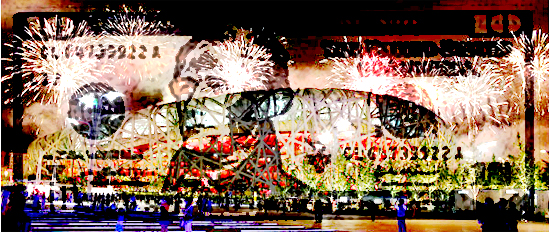Cash For Your Art
Posted on November 13, 2011 | posted by:
In an article entitled “Can Anyone Be a Designer” (the New York Times, Alice Rawsthorn, October 2, 2011) Rawthson writes about “Unnamed,” an exhibition in South Korea curated in absentia by the Chinese artist and political activist Ai Weiwei. The show “explores the role of design in projects with which it would not traditionally have been associated…. [arguing] that design is not solely the preserve of professional designers but can also be the work of scientists, activists, computer programmers, hackers and anyone else who applies ingenuity, originality, strategic thinking and other qualities that are indispensable to good design.”
The article caught my eye because, well, isn’t that a significant factor in interpreting our own transdisciplinary field of design? Interesting to me as well that the show was curated by a socially important and commercially successful artist, rather than a self-described “designer,” an attribute, in a more closed-minded era, which might have been considered the quintessential requirement for recognizing the essence of the practice.
Rawthson’s article does propose a direction for understanding what a “designer” might be. In my experience, this is a slippery question. I have heard many ideas, from Planner to Producer, and rather than debate whether or not Rawsthorn provided enough material to answer her own question [“can anyone be a designer?”], I will suggest the answer “If the shoe fits, wear it,” and make a case for this pronouncement by describing a project introduced to us not too long ago: the Brooklyn Torch currency program.
But first, a pit stop: Art Collectives. I bring this up to suggest that generally shoes come in pairs, and that at a minimum they function best that way. “Art collectives do away with the one-artist-one-object model. They come in various sizes and formats: couples, quartets, teams, tribes and amorphous cyberspace communities. Sometimes a group of artists assumes the identity of a single person; sometimes, a single artist assumes the identity of many. Membership may be official, or casual, or even accidental: friends brainstorming in an apartment or strangers collaborating on the Internet from continents away. And they may or may not refer to their activities as art. Research, archiving and creative hacking are just as likely to produce objects, experiences, information that is politically didactic or end-in-itself beautiful, or both. One way or another, joint production among parties of equal standing—we’re not talking about master artist and studio assistants here—scrambles existing aesthetic formulas….stretch[es] conventional definitions of art and artist even further, into the realm of activist politics, scientific experimentation and historical reclamation.” (The Collective Conscious, Holland Cotter, the New York Times, March 5, 2006)
So, the project: The Brooklyn Torch is described by its creator, Mary Jeys, and her colleague(s), as “a local currency project aimed at providing a paper means of exchange in North Brooklyn that will circulate and support the resident community in North Brooklyn… [bringing] together both artist and immigrant communities living in [those] neighborhoods, to improve integration of social groups and economies.”
The Torch partners declares this is legal, both by precedent, such as a successful similar venture in Ithaca NY, and because “law professor Lewis Solomon states in his book, Rethinking Our Centralized Monetary System, that there is no legal prohibition to creating a local currency system in the United States. The IRS, FBI, US Secret Service, Federal Reserve and Treasury Department have all declared the printing and use of local currencies to be legal.”
This may seem patently naive, but, as someone once so famously put it, “act in the face of uncertainty.” That is, do, make, don’t just talk about it. This is the difference between an idea flitting in and out of favor in the blink of an eye, and a real movement. Alexander Hamilton, may he rest in peace in his own Bronx community, would have been proud.
This is as much a reflection of Steven Weber’s description of open source as it is a description of a commercially viable art project. Ostensibly an approach to code writing, but equally a way of life, he writes: “Open source is an experiment in building a political economy—that is, a system of sustainable value creation and a set of governance mechanisms. In this case it is a governance system that holds together a community of producers around the counter-intuitive notion of property rights as distribution It is also a political economy that taps into a broad range of human motivations and relies on a creative and evolving set of organizational structures to coordinate behavior.” (Kindle location 36, The Success of Open Source, Steven Weber)
But how to live and survive as art and commerce now that action has begun? The Brooklyn Torch will merely have to be designed properly. What “proper” means here is to put agile systems in place, responsive to any number of variables that will mutate and increase according to its own success. It seems that Ai Weiwei, the “Unnamed” exhibit, and Alice Rawsthorn in her article about it, may be describing a significant movement (or as Bruce Mau put it, “Massive Change,”) but I would make one small modification to the question: Can Anyone NOT Be a Designer?